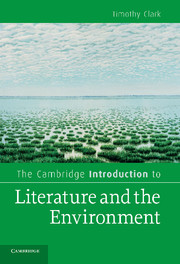Book contents
- Frontmatter
- Contents
- List of illustrations
- Preface
- Acknowledgements
- Introduction
- Romantic and anti-romantic
- The boundaries of the political
- Science and the struggle for intellectual authority
- Chapter 14 Science and the crisis of authority
- Chapter 15 Science studies
- Chapter 16 Evolutionary theories of literature
- Chapter 17 Interdisciplinarity and science
- The animal mirror
- Notes
- Further reading
- Index
- Cambridge Introductions to …
Chapter 15 - Science studies
Published online by Cambridge University Press: 05 June 2012
- Frontmatter
- Contents
- List of illustrations
- Preface
- Acknowledgements
- Introduction
- Romantic and anti-romantic
- The boundaries of the political
- Science and the struggle for intellectual authority
- Chapter 14 Science and the crisis of authority
- Chapter 15 Science studies
- Chapter 16 Evolutionary theories of literature
- Chapter 17 Interdisciplinarity and science
- The animal mirror
- Notes
- Further reading
- Index
- Cambridge Introductions to …
Summary
Studying science as a kind of behaviour
What if the work of scientists is itself studied as just another kind of human behaviour, on a par with courtship rituals or competitive sport? Ullica Segerstråle's account of a scientific controversy of the 1970s and 1980s is just such an exercise in socio-anthropology. Donna Haraway likewise describes ‘science studies’ as ‘about the behavioral ecology and optimal foraging strategies of scientists and their subjects’.
Scientists are usually baffled when their culture is studied in that way (Segerstråle, Defenders, 356). The issue, however, is not to discredit scientific work by supposedly explaining one scientist's theory in terms of personal prejudices or cultural background. That would be to make the untenable claim that sociology itself is somehow the true science that trumps the others (and then, would not the behaviour of sociologists in turn be studied by their own methods…?). To use a sociological theory of human competitive behaviour to partly account for the claims of scientists does not itself discredit the scientific method, for the sociology itself rests on it.
Segerstråle's focus is the fierce and sometimes nasty arguments that arose about the status of sociobiology after the publication of E. O. Wilson's Sociobiology in 1975. What caused the trouble was Wilson's one chapter about trying to understand human culture in evolutionary terms. Some of the stakes of this have already been outlined above.
- Type
- Chapter
- Information
- The Cambridge Introduction to Literature and the Environment , pp. 156 - 164Publisher: Cambridge University PressPrint publication year: 2011

